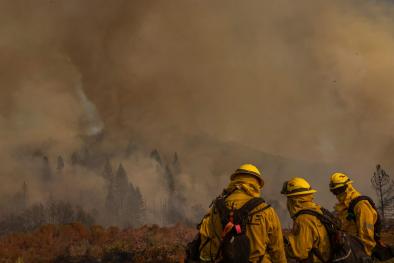Sixfold Increase in Historical Northern Hemisphere Concurrent Large Heatwaves Driven by Warming and Changing Atmospheric Circulations
Study key findings & significance
- The study assesses recent changes in the occurrence of simultaneous large heatwaves.
- The average number of days between May and September with at least one large heat wave in the Northern Hemisphere doubled between the 1980s and the 2010s, to around 152 from 73. But the number of days with two or more heat waves was seven times higher, growing to roughly 143 from 20. That’s nearly every single day from May to September.
- They are also hotter and affect a larger area.
- Their increasing occurrence is mainly driven by warming baseline temperatures due to global heating, but changes in weather patterns contribute to disproportionate increases over parts of Europe, the eastern United States, and Asia.
Author quotes
These “dramatic” increases came as a surprise, said Deepti Singh, a climate scientist at Washington State University and an author of the study.
Abstract
Simultaneous heatwaves affecting multiple regions (referred to as concurrent heatwaves) pose compounding threats to various natural and societal systems, including global food chains, emergency response systems, and reinsurance industries. While anthropogenic climate change is increasing heatwave risks across most regions, the interactions between warming and circulation changes that yield concurrent heatwaves remain understudied. Here, we quantify historical (1979–2019) trends in concurrent heatwaves during the warm season [May–September (MJJAS)] across the Northern Hemisphere mid- to high latitudes. We find a significant increase of ∼46% in the mean spatial extent of concurrent heatwaves and ∼17% increase in their maximum intensity, and an approximately sixfold increase in their frequency. Using self-organizing maps, we identify large-scale circulation patterns (300 hPa) associated with specific concurrent heatwave configurations across Northern Hemisphere regions. We show that observed changes in the frequency of specific circulation patterns preferentially increase the risk of concurrent heatwaves across particular regions. Patterns linking concurrent heatwaves across eastern North America, eastern and northern Europe, parts of Asia, and the Barents and Kara Seas show the largest increases in frequency (∼5.9 additional days per decade). We also quantify the relative contributions of circulation pattern changes and warming to overall observed concurrent heatwave day frequency trends. While warming has a predominant and positive influence on increasing concurrent heatwave frequency, circulation pattern changes have a varying influence and account for up to 0.8 additional concurrent heatwave days per decade. Identifying regions with an elevated risk of concurrent heatwaves and understanding their drivers is indispensable for evaluating projected climate risks on interconnected societal systems and fostering regional preparedness in a changing climate.
Related Content



